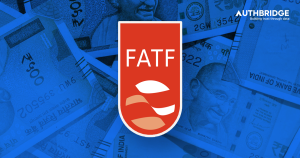Mr. Shah, the HR-Head at a start-up, vividly remembers the incident that made him realise he needs regular drug abuse tests for his employees in India. He got a call from one of the managers that an employee needed to be taken to the hospital immediately. One look at the agitated employee who was hesitating from going to the hospital – eyes red and wider than usual, body shaking -and Mr. Shah knew that he was staring at a grave problem. Turned out, a group of employees had gone out and smoked pot during the lunch break. They had all come back to the office and resumed work in the usual fashion except this one who was fidgety as soon as he entered. What was even more shocking is that this wasn’t the first time this group had indulged in such an activity. What started as an adventure became a habit when they realised that they weren’t arousing suspicion. This had continued for months on end and nobody, including the respective reporting managers of the group, had a clue.
Mr. Shah isn’t the first employer challenged by the rising menace of drug abuse test at the workplace. Neither is he the only one who didn’t know what to do and where to start upon coming face-to-face with it. He had read about ‘India’s drug problem’ but he didn’t expect it to creep into his office. To put things in perspective, India’s drug problem has reached alarming levels over the past few years. The recent findings of the Ministry of Social Justice and Empowerment, Government of India in a report titled Magnitude of Substance Use in India 2019 have been an eye opener in assessing the actual magnitude of drug abuse in the country.
The report states that about 1.3 crore individuals in India now consume illegal cannabis products whereas the number of people dependent on opioids, including Opium and Heroin, has reached 2.26 crores.
This is a sharp increase from the UN estimate of 2011-2013, placing the number of drug abusers in India at about 1 crore individuals.
Also read:Drug Abuse Test Best Practices
Further, a report by United Nations Office on Drugs and Crime reveals that drug abuse is most common among youngsters in the 15-35 age group, with a concentration in the 18-25 age bracket. A similar study by the Centre for Research in Rural and Industrial Development in the north Indian states of Punjab, Haryana, Himachal Pradesh, Rajasthan and Jammu and Kashmir (J&K) found that 65% of addicts living in these states became users between 15-20 years, meaning three out of four get addicted even before they turn 21.The fact that a staggering number of the Indian workforce is young and edge near the above age bracket is a cause of deep concern for employers.
While a spike in the consumption of drugs costs heavily to countries in terms of crimes, social disorder and health benefits, the rising numbers are particularly worrisome for employers like Mr. Shah who may have to bear more direct consequences. The association between low productivity, absenteeism, poor decision making and drug abuse are well-established. For instance, In the USA, it has been observed that drug users are absent three times more often than non-drug users, and they are three to four times more likely to be involved in an accident on the job. In addition to impaired judgement, confusion, aggression, frequent drug abusers are also prone to violence at work, leading to a toxic and unsafe work environment for their colleagues. The chance of passing on the habit to colleagues can never really be ruled out either.
In terms of direct costs to business, the United States Department of Labour estimated the drug use in the workplace to cost businesses between $75 billion and $100 billion annually in lost time, accidents and higher healthcare and workers’ compensation cost.The problem is compounded in the case of drug-abusing blue-collar workers who directly face a brand’s customers and expose them to very real risks. The cost of illegal drugs, against common knowledge, is hardly is a deterrent for low-income blue-collar workers as it is now possible to buy drugs like brown sugar or chitta, which is a kind of heroin, in just INR 40 to last a whole day. In addition to reputational, business and revenue losses, the threat of crimes leading to severe injuries and even loss of life looms over employers working with drug-abusing, blue-collar workforce.
Despite these facts, drug screening remains untested waters for most organisations in India for varying reasons. The fear of scaring away talent, categorising drug abuse as ‘personal problem’, misguided belief that it affects only BPOs and IT sector, lack of strategy to deal with identified drug abusers, and most importantly lack of awareness about easy and economical drug screening options remain some of the common reasons.
The good news is that in India BPOs and IT industries have already shown how to prevent drug abuse at workplaces by adoption of drug abuse testing in the hiring process for all employees. The procedure involves a simple urine, hair or blood test to look for traces of a set number of chemicals. Employees can be tested for the presence of any number of common drugs divided across panels. These tests are conducted in modern labs, equipped with the latest technology and trusted for their transparent and efficient processes. Industry experts, like AuthBridge, have tie-ups with these labs that enable them to raise easy requests, get samples, and deliver reports to the client office within a matter of hours. The whole process is confidential and designed within the legal and compliance framework in India.
Having a reliable drug screening partner is also important to be abreast with the need gaps in the process and to continuously address them to enable a safer work environment. At AuthBridge, for example, we have been able to make our clients see the advantages of a recurring or continuous drug screening that addresses concerns like a new joiner already aware of such a drug test policy might be able to protect themselves by abstaining from use for a few days and that current employee can become a drug abuser at any time. A randomized testing plan repeated at regular intervals, thus, can yield far better results in the pursuit of sifting drug-users from the non-drug users.
An experiment by the United States Postal Service reflected that by introducing pre-employment drug testing for new applicants, the Postal Service could reduce absenteeism of drug users to the general level of non-drug users and save about $100 million over a three-year period.three-year period, If similar effects can be generated in India, this alone can become a huge incentive for employers to include regular drug testing to their pre and post-hiring processes. When the drug abuse becomes an economic deterrent, chances of the country’s youth abstaining from it improve manifold. Measures like drug abuse awareness sessions and psychotherapy can further help employers in building and maintaining a safe work environment for all employees.
(Source: Unodc, Vice, Social Justice)





